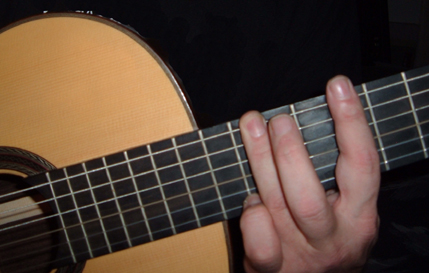In any guitar music, be it a piece specifically written for the guitar or a transcription from another instrument’s repertoire, there will be suggested/recommended/required fingering added by the composer, transcriber or an editor. Some players treat these as sacrosanct; others disregard them and follow their own ideas of physical comfort, their belief re the intent of the composer/transcriber. Most guitarists beat a path somewhere in the middle ground whereupon they follow the fingerings in their chosen edition making changes only if absolutely necessary – if they believe there is a mistake in the edition or if a facsimile edition of the composer’s work indicates a different fingering.
Often none of these considerations make the ‘change’ in the fingering. Most often it is a fault of memorization. When one memorizes a piece, there is always the possibility that although something sounds right, it is being memorized incorrectly. This is why it is critical to memorize any pieces with the music on the stand in front of the guitarist. It is also critical to go back to the printed page every so often to ascertain whether the performer has unintentionally changed things—including actual notes – with the fingerings.
Of course, there are times when the guitarist immediately discounts an indicated fingering on the initial read-through and proceeds to use this fingering to the detriment of the performance. How? I will use the following example from Albeniz’ beautiful piece Sevilla.

I have played this piece for a number of years. I use a combination of the Francisco Tárrega and Manuel Barrueco transcriptions. The first measure of the particular phrase above is fingered per the Barrueco transcription. The second measure is how I played it. Note the only difference—a half barré at the eighth fret rather than the full barré. I would always become apprehensive as this phrase approached during any performance. Sometimes I’d execute it cleanly, sometimes not.  After many times of checking the actual notes played, I finally went back to look at the music carefully paying particular attention to the fingering. The photograph to the left shows my version of this chord utilizing a half barré at the eighth fret. To jump into this formation, my wrist had to change position rotating towards the heel of the neck. This is where my difficulty came in. Unless I rotated my wrist correctly, the half barréd notes on the fourth, third and second strings would often be muffled. Hence my apprehension when this measure approached. Well, after years of this aggravation, I looked carefully at the fingering and tried the full barré.
After many times of checking the actual notes played, I finally went back to look at the music carefully paying particular attention to the fingering. The photograph to the left shows my version of this chord utilizing a half barré at the eighth fret. To jump into this formation, my wrist had to change position rotating towards the heel of the neck. This is where my difficulty came in. Unless I rotated my wrist correctly, the half barréd notes on the fourth, third and second strings would often be muffled. Hence my apprehension when this measure approached. Well, after years of this aggravation, I looked carefully at the fingering and tried the full barré. See photograph to the right. Instantly, I could jump up into this chord and nail it cleanly, perfectly, forcefully – every time!
See photograph to the right. Instantly, I could jump up into this chord and nail it cleanly, perfectly, forcefully – every time!
Of course, I had to know why this remarkable miracle was occurring. When I first learned Sevilla, I was more concerned with making sure I had the correct harmony/chords in this passage. It is a critical passage, very dramatic, as a turnaround into the original motif. Being a fond proponent of using as little energy as possible to execute a piece, I probably figured the half barré was more than adequate to take care of two notes on adjacent strings on the same fret. I did not factor in the wrist motion and committed my faulty fingering to memory. On consequent read-throughs, I made certain the notes were correct, but never looked twice at the fingering.
So a fingering that seems to force one to expend more energy is actually more comfortable to execute. In this instance it is more productive to invest a bit more energy to get an easily replicated phrase than to save a bit and waste a clean performance!










No comments:
Post a Comment